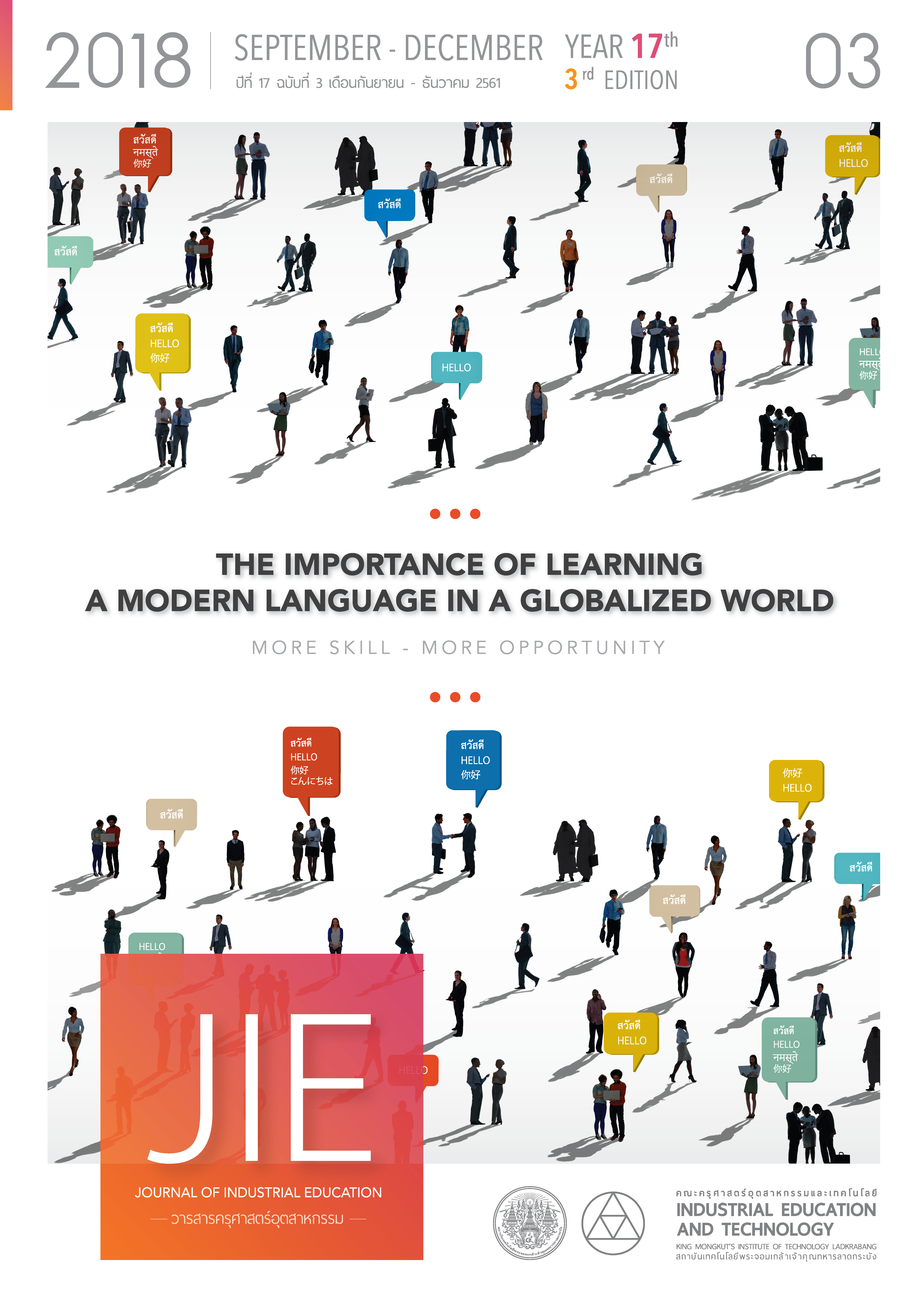THE DEVELOPMENT OF INQUIRY MODEL (5Es) BASED INSTRUCTIONAL PACKAGE FOR GRADE 10 STUDENTS ON “BIOMOLECULES”
Keywords:
Instructional Package, Inquiry Model (5Es), Efficiency, Learning Achievement, Analytical Thinking AbilityAbstract
This research presents the development of inquiry model (5Es) based instructional package for grade 10 students on “Biomolecules”. The sample group was chosen using cluster random sampling and consisted of 43 grade 10 students (academic year 2017) from a high school in Nonthaburi Province. The tools for data collection were a learning achievement survey form on “Biomolecules”, an analytical thinking ability survey form on biomolecules, a post-instructional package record, and student learning records. The research methodology was a one group pretest-posttest design. The data was analyzed by using mean, percentage, standard deviation, and t-test for dependent samples.
The results of the research reveal that the efficiency of the 5Es instructional package on biomolecules or E1/E2 was 81.20/80.10. The students’ posttest scores and analytical thinking score were higher than their pretest ones, with a statistical significance at 0.01 level.
References
[2] Office of the Basic Education Commission. 2016. Policy for Fiscal Year 2017, Office of the Basic Education Commission. Bangkok: The Agricultural Co-operative Federation of Thailand., Ltd.
[3] The Institute for the Promotion of Teaching Science and Technology. 2017. Summary of PISA 2015. Bangkok: The Institute for the Promotion of Teaching Science and Technology.
[4] Tippayatat, P., Phrombun, S. 1999. Student Advancement Project in Bangkok Schools. Bangkok: Faculty of Education Srinakarinwirot University.
[5] Ballone D. 2004. The 5Es Instructional Model : A Learning Cycle Approach for Inquiry-Based Science Teaching. The Science Education Review. 3(2), P. 49-58.
[6] Moondaeng S. 2011. Science Teaching Seminar. Bangkok: Ramkhamhaeng University Press.
[7] Bybee R. et.al,. 2009. A Commissioned Paper Prepared for a Workshop on Exploring the Intersection of Science Education and the Development of 21st Century Skills .The BSCS 5Es Instructional Model and 21st Century Skills. New York : The National Academies Board on Science Education.
[8] Kanchanarakpong S. 2006. Thinking Skills Assessment Manual. Bangkok: Than Aksorn, Ltd.
[9] Kattiyaman, W., Weerathammo, A. 2006. Teaching for Thought Improvement. Bangkok: Theme Printing.
[10] Kuanhavej B. 1999. Education Innovation (4th Edition). Bangkok: Chulalongkorn University Press
[11] Meewan D. 2009. Study on Science Learning Achievement and Science Problem-solving Ability of Grade 11 Students under Science Problem-solving Instructional Package. Master of Education, Srinakarinwirot University.
[12] Nachai S. 2010. Improvement of Physics Learning Achievement and Science Problem-Solving Ability of Grade 11 Students by Using 5Es Inquiry. Master of Education Thesis (Science Education), Khonkaen University.
[13] Sangpho C. 2016. A Laboratory Set of a Microcontroller for Controlling a Robot. Journal of Industrial Education, 15(2), P.126-131.
[14] Sriwilai W. 2013. Creation of an Instructional Package for Learning Area of Science (Flora) for Grade 4 Students by Integration of 5E Model and STAD Technique. Master of Education Thesis (Science teaching), Burapa University.
[15] Acisi S. et.al,. 2011. Effects of the 5Es Learning Model on Students’ Academic Achievements in Movement and Force Issues. Procedia Social and Behavioral Sciences, 47, P. 2459-2462.
[16] Demiricioglu, G., Cagatay, G. 2014. The Effects of Laboratory Activities Based on 5Es Model of Constructivist Approach on Grade 9 Students’ Understanding of Solution Chemistry. Procedia Social and Behavioral Sciences, 116, P. 3120 – 3124.
[17] Karsli F. et.al,. 2014. Developing a Laboratory Activity by Using 5Es Learning Model on Student Learning of Factors Affecting the Reaction Rate and Improving Scientific Process Skills. Procedia Social and Behavioral Sciences, 116, P. 663-668.
[18] Sukkhumduang S. 2016. A Comparative of Grade 4 Students’ Science Achievement and Analytical Thinking Ability Using a 5Es Learning Cycle Model (5Es) and a Traditional Teaching Method. Master of Education, Srinakarinwirot University.
Downloads
Published
How to Cite
Issue
Section
License
"The opinions and contents including the words in papers are responsibility by the authors."
"ข้อคิดเห็น เนื้อหา รวมทั้งการใช้ภาษาในบทความถือเป็นความรับผิดชอบของผู้เขียน"



